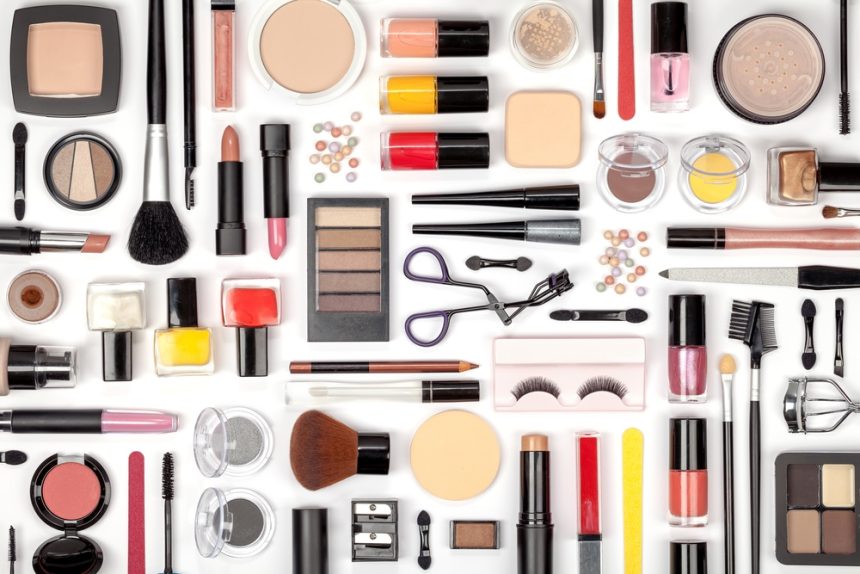Veve Vortex: Exploring the Latest Trends
Stay updated with the latest in news, tech, and lifestyle.
Cosmetics: The Secret Life of Your Lipstick
Unlock the secrets behind your lipstick! Discover surprising ingredients and the fascinating journey of cosmetics that color your world.
The Chemistry Behind Your Favorite Lipstick: What Makes It Tick?
The chemistry behind your favorite lipstick is a fascinating blend of science and art, combining various ingredients to achieve the perfect color, texture, and longevity. At its core, lipstick typically consists of waxes, oils, pigments, and emollients. Waxes, such as beeswax or carnauba wax, provide structure and stability, allowing the lipstick to maintain its shape while applying smoothly. Oils like castor oil or jojoba oil add moisture and shine, ensuring that your lips feel comfortable and look luscious. Pigments give lipsticks their vibrant hues, while emollients help to soften and hydrate your lips, making the overall formula skin-friendly.
Understanding the chemistry behind your favorite lipstick isn't just for scientists; it can empower consumers to make informed choices. For instance, when selecting a lipstick, consider the ingredients and their functions:
- Waxes: Create a firm texture and help the lipstick adhere to your lips.
- Oils: Contribute to moisture and shine, enhancing wearability.
- Preservatives: Ensure the product stays fresh and safe for use.

5 Common Ingredients in Lipsticks and Their Functions
When it comes to lipsticks, understanding the common ingredients can help consumers make informed choices. Here are five of the most prevalent ingredients found in lipsticks and their specific functions:
- Castor Oil: This natural oil acts as a moisturizing agent, ensuring that the lips remain hydrated and smooth throughout the day.
- Beeswax: A key component that provides structure and stability to the lipstick, beeswax also adds a layer of protection to the lips, helping to lock in moisture.
- Colorants: Essential for achieving the vibrant shades we love, colorants add pigmentation to lipsticks, enhancing their visual appeal.
- Shea Butter: Known for its rich emollient properties, shea butter helps nourish the lips, making them soft while also providing a creamy texture to the lipstick.
- Fragrance: While not essential for the functionality of a lipstick, fragrance is often added to enhance the user experience, giving lipsticks a pleasant scent.
Understanding these ingredients is key to choosing the right lipstick for your needs. The combination of moisture-retaining castor oil and protective beeswax ensures that your lips feel as good as they look. Meanwhile, the vibrant colorants and nourishing shea butter not only provide beautiful hues but also contribute to the overall health of your lips. Finally, a subtle fragrance can elevate the experience, making application more enjoyable. By recognizing the roles these common ingredients play, consumers can select lipsticks that align with both their aesthetic preferences and skincare needs.
How to Choose the Perfect Lipstick Shade for Your Skin Tone
Choosing the perfect lipstick shade for your skin tone can transform your look and boost your confidence. To start, it's essential to determine your skin's undertone, which can be warm, cool, or neutral. If you have a warm undertone, look for lipsticks with yellow or peachy tones, such as coral or warm reds. For cool undertones, opt for shades with blue or purple hues like berry or fuchsia. If you're unsure, a neutral undertone gives you the flexibility to experiment with both warm and cool shades. Remember, the right lipstick isn't just about color; it's about enhancing your natural beauty.
Once you've identified your undertone, consider the intensity of your skin tone. Fair skin often looks striking with soft pinks and light corals, while medium skin can handle bolder colors like mauves and rose shades. Deep skin tones can go for vibrant colors such as deep reds and dark berries for a dramatic effect. Test the lipstick on your lips, not just your hand, as the true color often appears differently on your lips. Don't hesitate to seek advice from beauty consultants or try samples to find your perfect match. Remember, your ideal lipstick shade should not only complement your skin tone but also reflect your personal style!